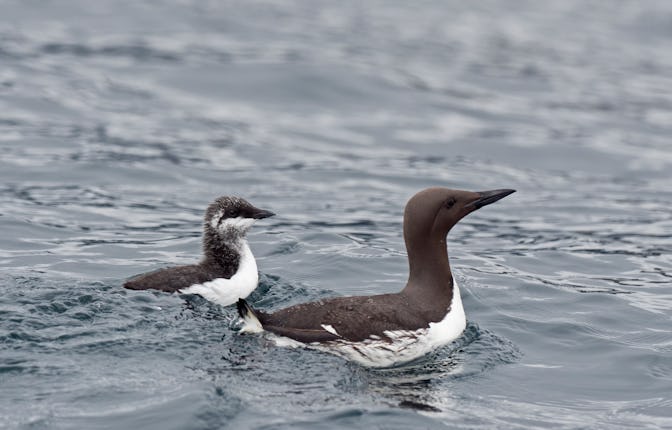Alaska's Seabirds In Crisis Amid Record Heat
What will happen to Alaska's common murre population?

In recent years, climate change has increasingly made headlines, but few stories are as alarming as the record heat wave that struck Alaska. The impact of this extreme weather event, which occurred from 2014 to 2016, is still being felt by the common murre, a seabird species known for its striking black and white plumage and remarkable diving abilities. According to a recent study, approximately half of the common murre population in Alaska has perished due to this marine heat wave, marking one of the worst mortality events in modern history.
The Impact on Common Murres
Common murres play a pivotal role in their ecosystem. These seabirds are integral to marine food webs, preying on fish and serving as prey for larger predators. The sudden decline in their numbers raises concerns not just for their survival but also for the health of marine ecosystems across Alaska.
Experts have observed that while some populations remain stable or only slightly affected, the common murres have been hit hard. Drummond, a leading researcher on this phenomenon, noted that half of the data collected indicates significant mortality rates among these birds. Their decline is not merely an isolated incident; it reflects broader environmental changes that could have long-lasting implications.
Understanding Marine Heat Waves
Marine heat waves are periods when ocean temperatures rise significantly above average for an extended period. These events can disrupt food availability for seabirds like the common murre by affecting fish populations and altering marine habitats. As temperatures rise, fish may migrate to cooler waters or spawn at different times than usual, creating a ripple effect throughout the food chain.
The consequences of these changes are dire for seabirds that rely heavily on specific fish species during breeding seasons. When food becomes scarce, adult birds struggle to feed themselves and their chicks, leading to lower reproductive success and higher chick mortality rates.
Recovery Challenges Ahead
One of the most concerning findings from recent studies is that recovery appears unlikely for Alaska’s common murres. The combination of ongoing climate change impacts and habitat alterations poses significant challenges to their population growth. As temperatures continue to rise and marine ecosystems evolve rapidly, these seabirds may find it increasingly difficult to adapt.
Moreover, researchers emphasize that recovery isn’t just about numbers; it’s also about genetic diversity and resilience within populations. A drastic reduction in numbers can lead to inbreeding and decreased genetic variation—factors critical for adapting to future environmental changes.
Future Implications: A Call For Action
The plight of Alaska’s common murre serves as a stark reminder of what’s at stake if we fail to address climate change effectively. As scientists continue monitoring these birds' populations and behaviors, their findings will inform conservation strategies aimed at protecting not only common murres but also other vulnerable species facing similar threats.
It is crucial for policymakers, conservationists, and communities alike to recognize the interconnectedness of our actions with nature’s delicate balance. Promoting sustainable practices in fishing industries alongside implementing protective measures can help mitigate further losses within seabird populations.